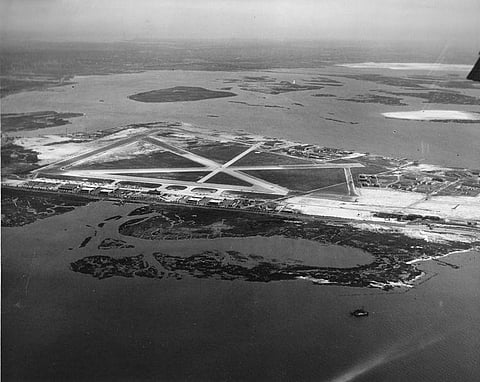Records were broken and the wealthy flew out of Floyd Bennett Field. That seems like a lifetime ago, as what was once a glistening airport, now lies in ruins. The airplane hangars are empty (except one very special Hangar B). The control tower has been abandoned. The runway, which was the first one to be concrete and electrically lit, is now covered in weeds. These facts are disheartening. Luckily, for the vintage aircrafts that still reside at Floyd Bennett, there is a trusty group of volunteers working hard to maintain and repair some of the aircraft.


